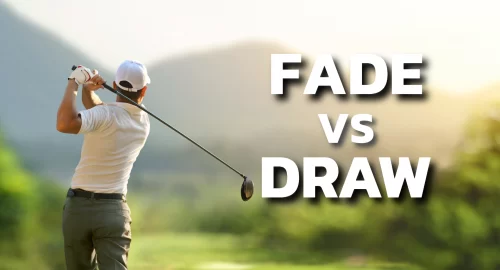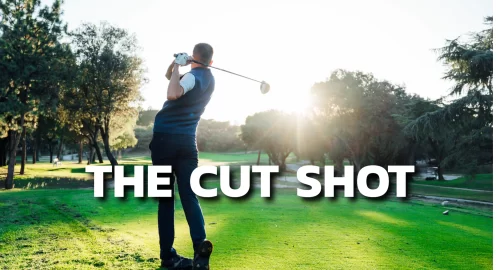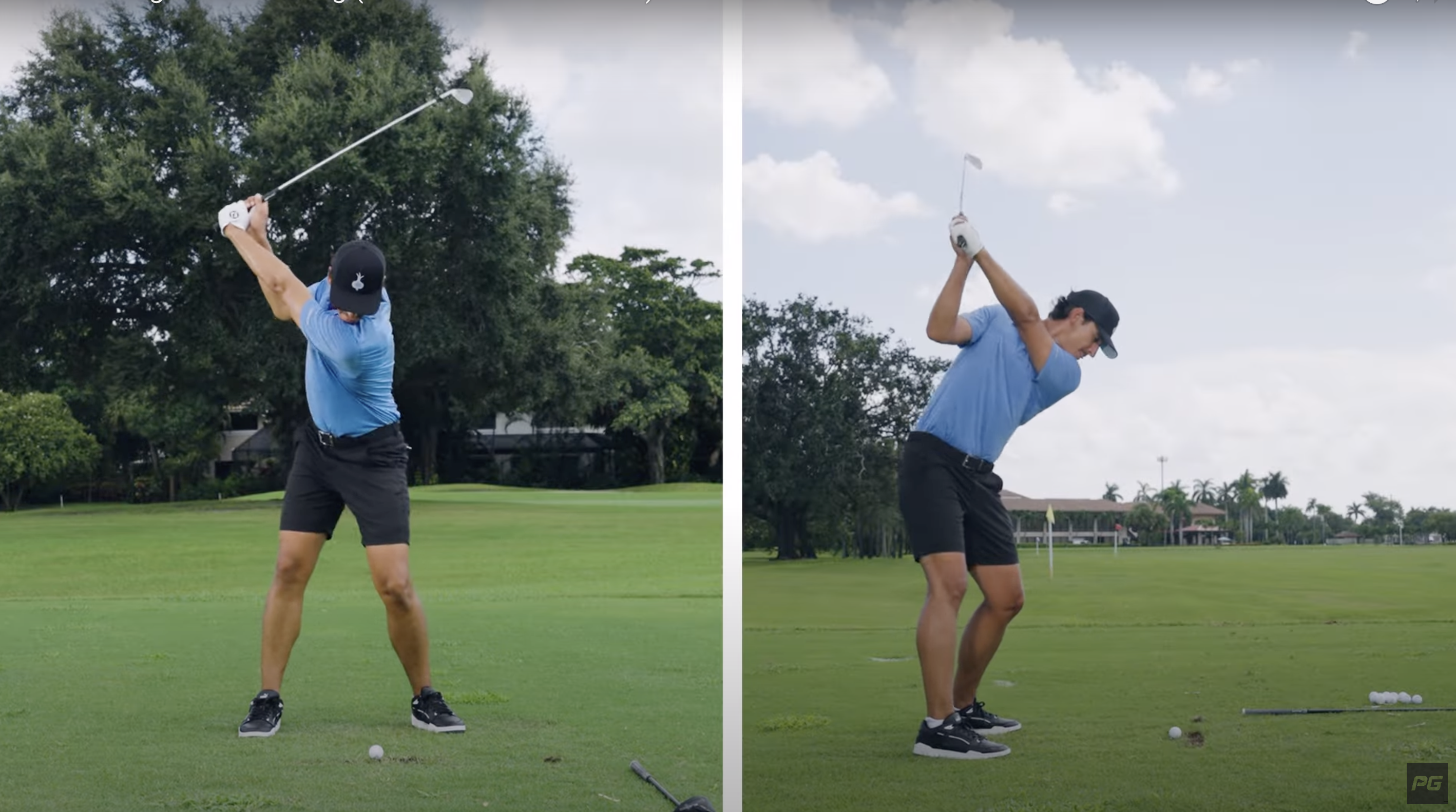
In golf, mastering the differences between your driver and iron swings is essential for achieving both distance and accuracy. Understanding these distinctions can help you hit longer drives and more precise iron shots, regardless of your current handicap.
In this article, we’ll dive into three key areas where driver and iron swings differ: setup, backswing, and follow-through. For a visual, be sure to watch the YouTube video below, where coach JT Thomas gives a run down each of these crucial swings and the proper techniques.
First, let’s dive into how the setups for each of these golf swings differ, starting with the driver.
The Driver Golf Swing Setup
When setting up with the driver, your goal is to hit up on the ball with an upward angle of attack for maximum distance. To achieve this, the ball should be positioned forward in your stance (see example below.)
Start by placing your feet together, then step slightly forward with your lead foot and take a larger step back with your trailing foot. This setup encourages an upward strike and requires a slight tilt, with the trail shoulder lower than the lead. Additionally, keeping the club handle slightly higher aids in closing the clubface, creating a powerful impact.
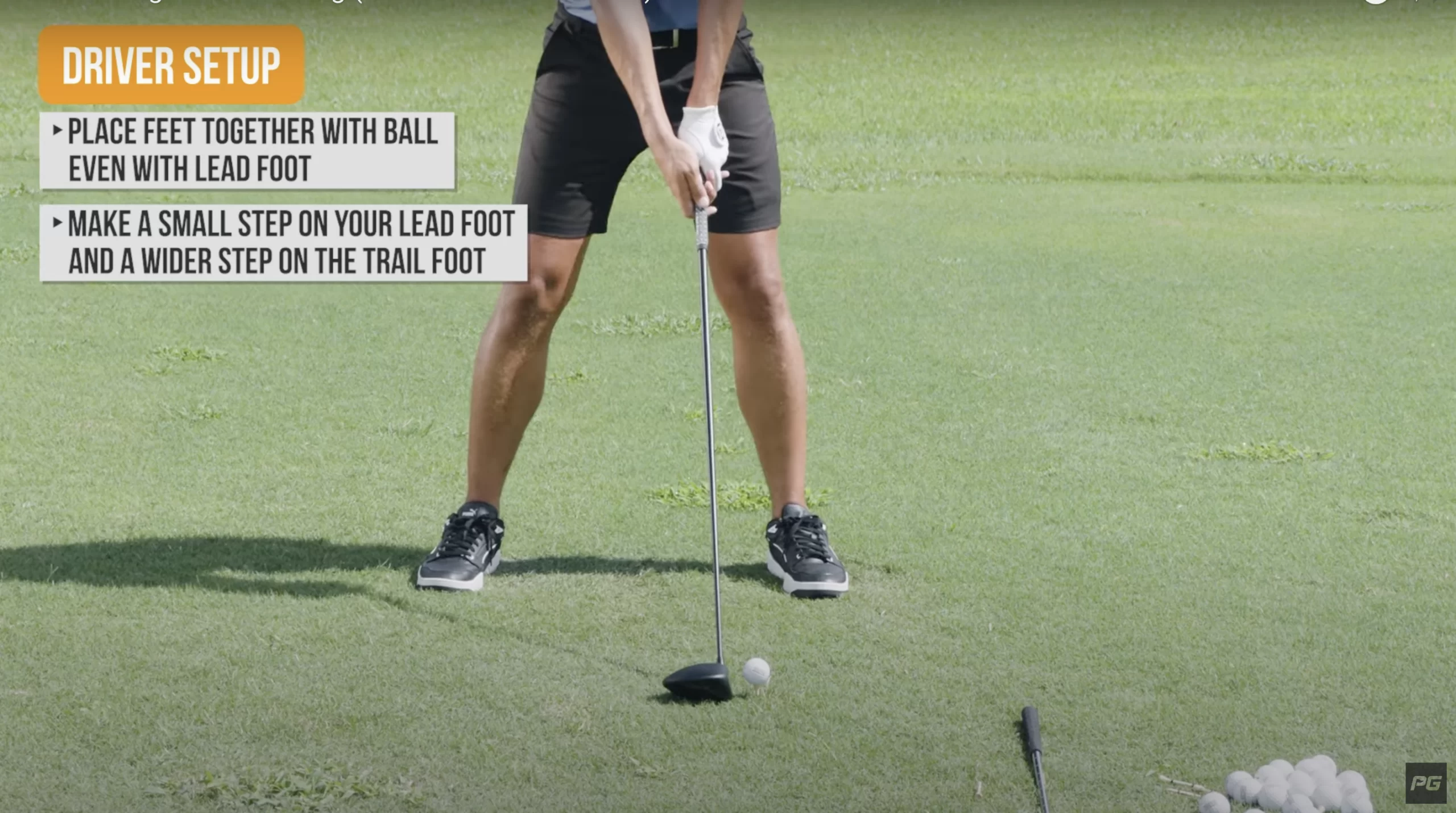
The Iron Golf Swing Setup
In contrast, iron shots should be struck with a descending blow, which is achieved by placing the ball in the center of your stance.
Take equal steps with each foot to position the ball correctly, as shown below (JT is using a 7 iron in the example). Next, and this is very important, ensure your shoulders are level to promote a downward strike. Keeping the handle of the club lower helps initiate a hinge, leading to solid contact and a controlled trajectory.
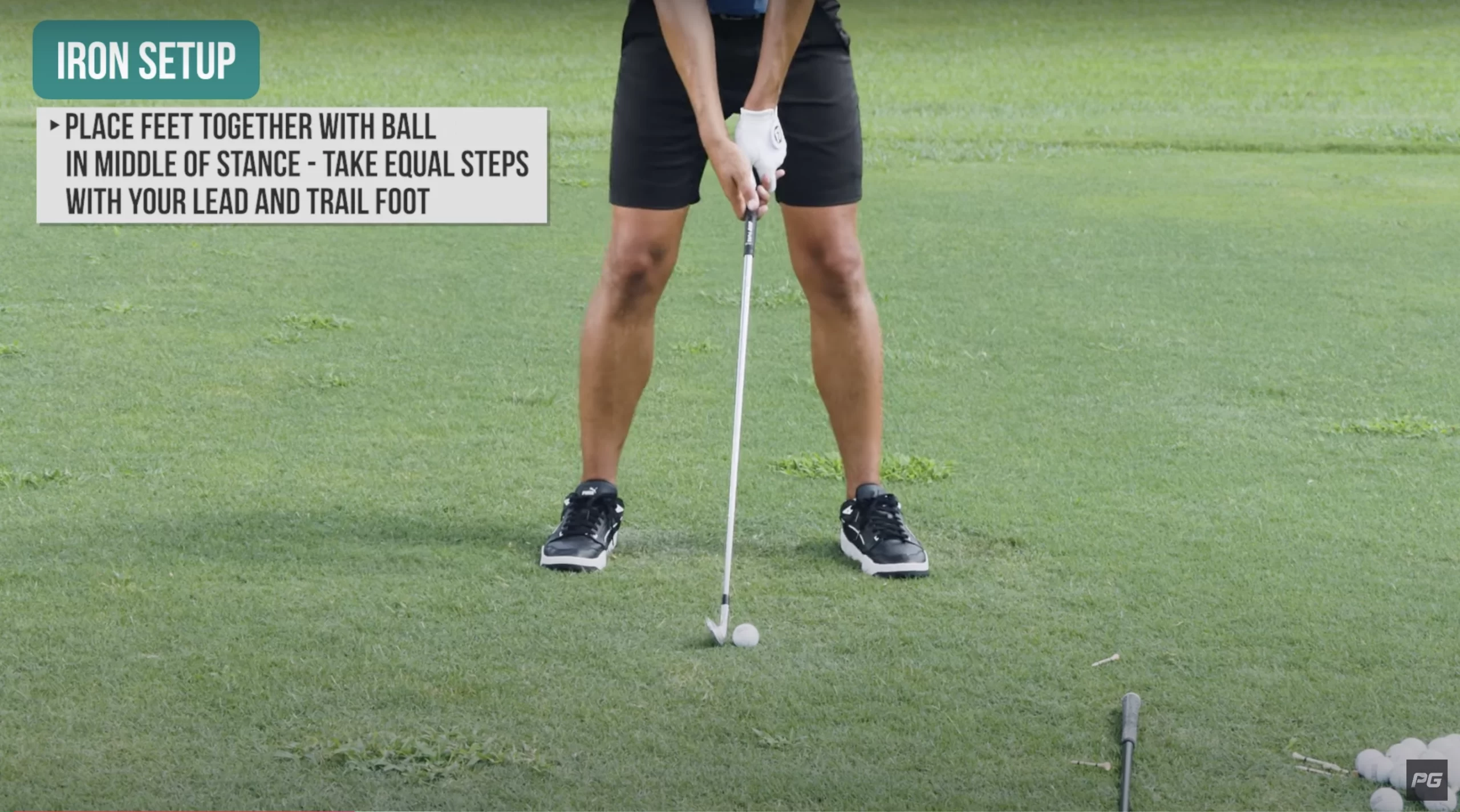
Next, let’s dive into the golf backswing.
Driver Backswing
To generate power and a positive angle of attack with the driver, focus on shifting your weight toward your back foot and rotating your shoulder fully. A significant weight shift and shoulder turn allow the head to stay behind the ball, which encourages an upward strike.
This move is essential for long drives, giving you the distance you aim for off the tee. The more rotation the better when working with a driver to maximize that distance.
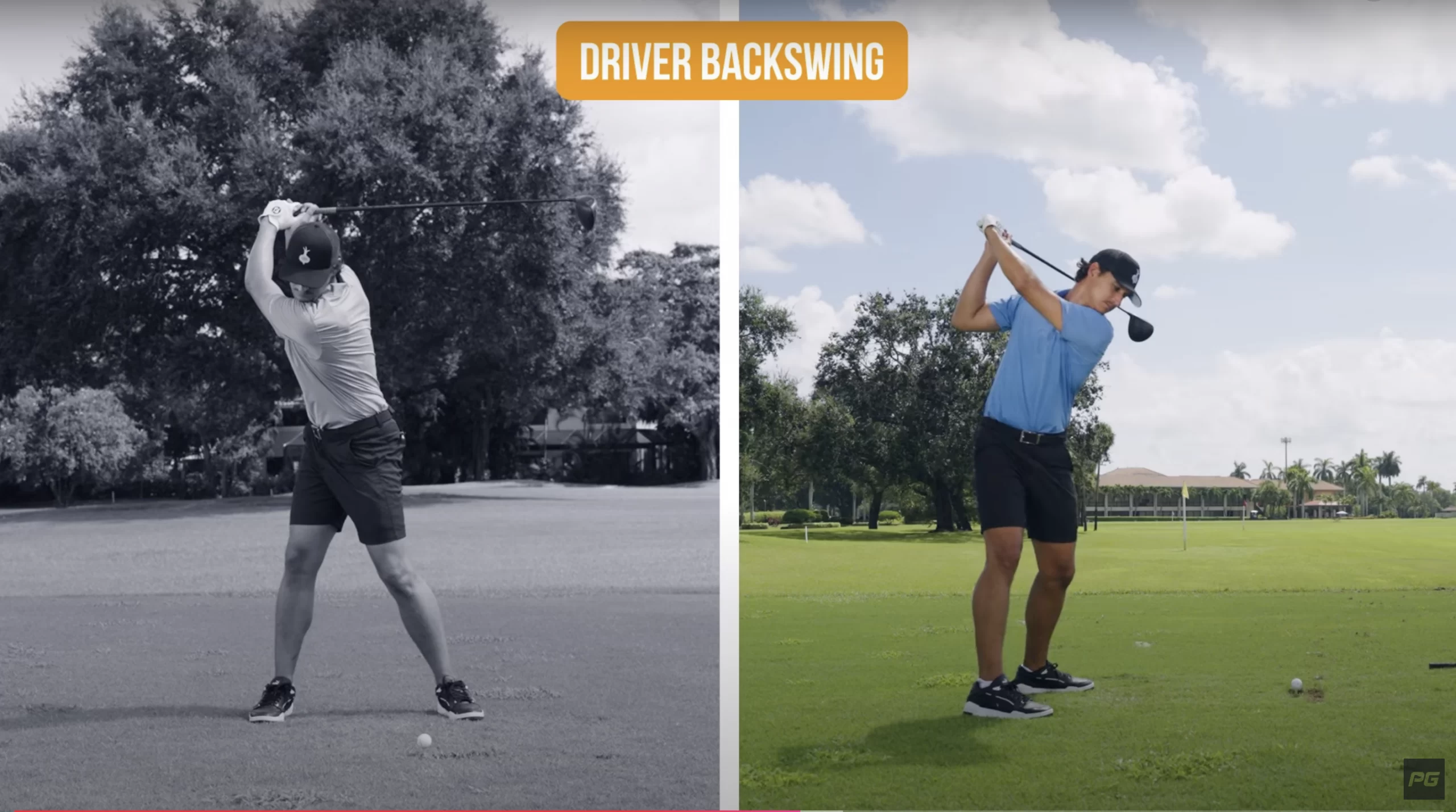
Iron Backswing
For irons, stability is key. Keep your weight balanced at 50/50 between both feet to keep your head over the ball. A more compact turn with less body rotation and more arm movement will help you stay steady, improving contact for crisp, accurate shots.
Lastly, the follow through, the final part of your golf swing. Let’s talk about the differences between the driver and iron when it comes to this portion of the golf swing.
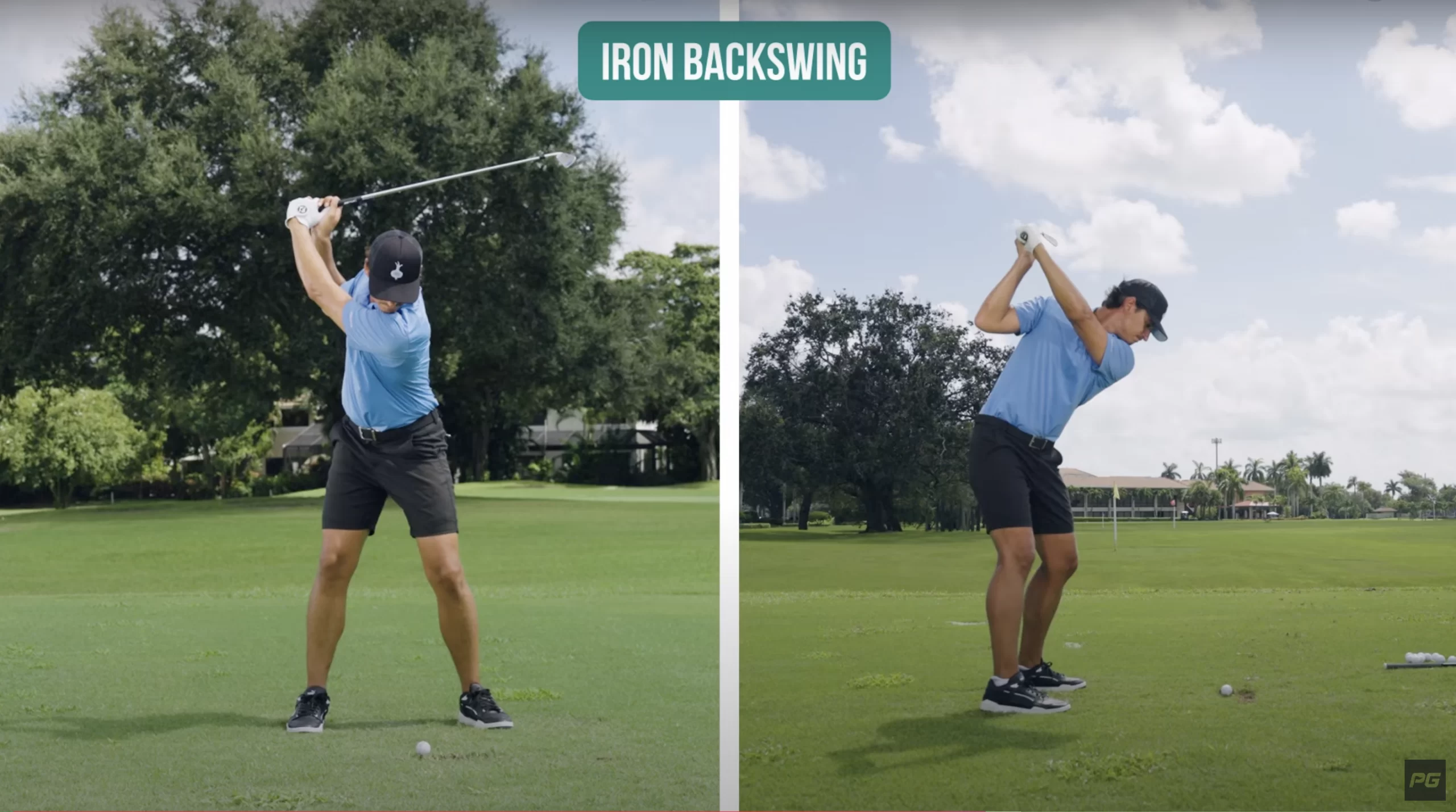
The Golf Driver Follow-Through
In the driver follow-through, the chest should rise towards the sky, and the arms should extend away from the body. Straightening the legs and lifting the chest creates an upward motion that promotes distance while reducing spin.
The Golf Iron Follow-Through
When using the iron, you should maintain a level chest and a shorter arm finish. This controlled follow-through helps keep the ball flight low and consistent, ideal for precision shots into the green.
Focus on the Setup, Backswing and Follow Through
The differences between the driver and iron swings stem from each club’s purpose—drivers aim for distance with an upward strike, while irons focus on precision with a downward hit.
By mastering these distinctions in setup, backswing, and follow-through, you’ll be better equipped to tackle each shot on the course. Remember to practice these techniques to solidify your swing mechanics, ultimately leading to better overall performance in your game.
Don’t forget to check out our other YouTube videos for more free helpful tips on how to improve your golf swing.
